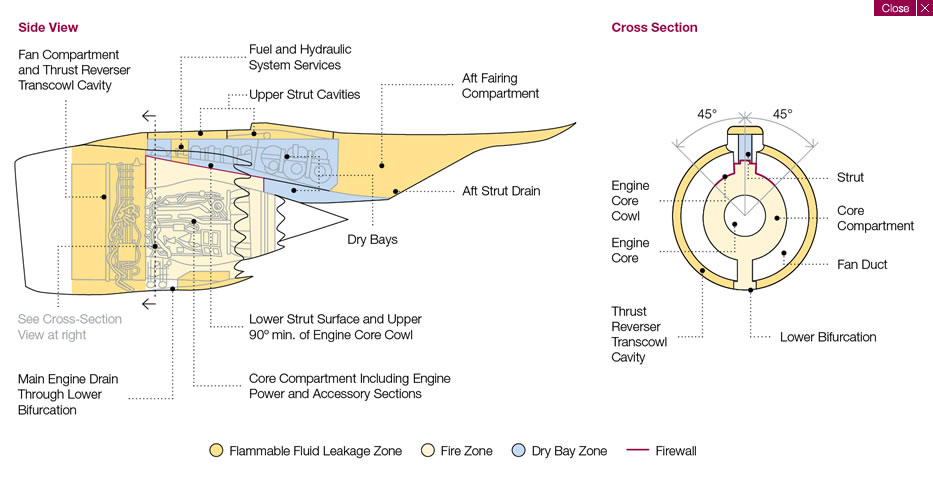I’m wondering where exactly does the suppression material go into the engine? Does it all flow into the core or is it distributed to different places.
It is distributed with some nozzles. But the exact position of them depends on the specific engine. In this slides you can get an idea of the positions for a turboprop engine. They usually cover at least the core, and some other zones that should be separated by firewalls. This image (from Boeing) gives you an idea of the different zones, which I expect they are covered by different nozzles:
and this image (from the same link) contains the position of the fire detectors, which I expect to be covered by at least one nozzle:
Does the loss of the cowl render it ineffective? I expect that halon would only work in an enclosed space. It
Probably yes. Engines are not designed to have catastrophic failures like the Flight UA-328 (they are supposed to contain any failure). So, so probably not even the fire protection system is designed to handle such case. A large destruction like that may have potentially cut some of the fire protection tubes and damaged the firewall protections.


